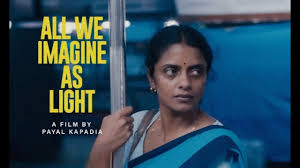The Silent Scream of Indian Noir
The noir cinema of Indian noir cinema is, after all, a reflection of the darkest by-lanes of society, where crime and morality and human consciousness collide. In this tradition women frequently appear as mysterious figures who carry the burdens of self-sacrifice and secrecy. Those of the vengeful widow and the determined police officer, among a variety of others, take them into the heart of themes like injustice, survival, and rebirth.
The Archetype of Sacrifice: Women Bearing the Cross
Vidya Bagchi in Kahaani (2012)
Kahaani, directed by Sujoy Ghosh, follows Vidya Bagchi (Vidya Balan) as she goes in search of her missing husband in Kolkata. Her journey is a personification of the goddess’ powerful, steadfast energy, and her determination to survive. Vidya’s role defies societal norms and she uses the supposed frailty of a pregnant woman and her gender to go through the heavily male-driven society and uncovering a deeper conspiracy. (Wikipedia)
Santosh in Santosh (2025)
Helmed by Sandhya Suri, Santosh has a young widow inheriting her late husband’s police job after he is killed in a riot. Investigating the murder of a Dalit woman rocks her entire world and Santosh finally faces the institutionalized caste oppression, and systemic misogyny, prevalent in the police force. Her evolution from ‘witness’ to ‘executer’ underscores the kind of sacrifices that women have to make to ensure that justice is served in an imperfect system. (Financial Times)
Silence as Resistance: The Power of the Unspoken
Anjali Bhaati in Dahaad (2023)
In the series Dahaad, Sub-Inspector Anjali Bhaati investigates the disappearance of 27 women in Rajasthan. Her journey uncovers a serial killer targeting marginalized women, reflecting the societal apathy towards the oppressed. Anjali’s silence is not submission but a strategic resistance, allowing her to navigate caste and gender biases to bring the perpetrator to justice. (Wikipedia)
Durga in Netrikann (2021)
Netrikann introduces Durga, a blind former police cadet who becomes the key witness in a serial killer case. Despite her disability, Durga’s heightened senses and determination challenge the perception of vulnerability. Her silence, imposed by society’s underestimation, becomes her strength as she unravels the truth. (Wikipedia)
Transgressive Femininity: Breaking the Mold
Phoolan Devi in Bandit Queen (1994)
Based on a true story, Bandit Queen portrays Phoolan Devi’s transformation from a victim of child marriage and sexual abuse to a feared bandit leader. Her rebellion against patriarchal oppression and caste-based violence challenges traditional gender roles, making her a symbol of resistance and empowerment. (Journals OpenEdition)
Rajjo in Gulaab Gang (2014)
Gulaab Gang features Rajjo, who leads a group of women fighting against social injustices. Her character embodies the struggle against gender-based violence and corruption, using both intellect and physical strength to challenge the status quo. (Journals OpenEdition)
The Evolution of Female Protagonists in Indian Noir
Over the years, Indian noir has witnessed a shift in the portrayal of female characters—from passive victims to active agents of change. This evolution reflects broader societal changes and the growing discourse on gender equality. Films like Kahaani, Santosh, and Dahaad not only entertain but also provoke thought on the roles women play in confronting and challenging systemic injustices.(Wikipedia)
Echoes in the Shadows
In their sacrifices and silences, the women of Indian noir thrillers reveal the blackest corners of society. Their narratives weave complex empathetic trajectories, inviting viewers to address uncomfortable truths of gender, caste, power. Even as Indian cinema churns out such tales, they remind us how beauty lies in the silence and how sacrifice only transforms us.
Frequently Asked Questions (FAQ)
Q1: What defines Indian noir cinema? Indian noir blends elements of crime, moral ambiguity, and social commentary, often highlighting the darker aspects of society through complex characters and narratives.
Q2: How are women portrayed in Indian noir thrillers? Women in Indian noir are depicted as multifaceted characters victims, survivors, rebels who navigate societal constraints and personal traumas, often emerging as agents of change.
Q3: Are there real-life inspirations for these characters? Yes, films like Bandit Queen are based on real individuals like Phoolan Devi, whose life stories reflect the themes of resistance and empowerment central to Indian noir.(Journals OpenEdition)
Q4: How has the portrayal of women evolved in this genre? Earlier portrayals often depicted women as passive victims. Contemporary narratives present them as active protagonists confronting and challenging societal norms and injustices.(Journals OpenEdition)
Q5: What impact do these films have on society? These films spark conversations about gender roles, caste dynamics, and systemic oppression, encouraging audiences to reflect on and question societal structures.